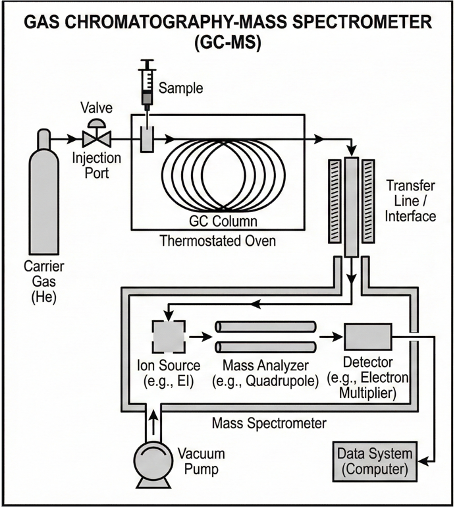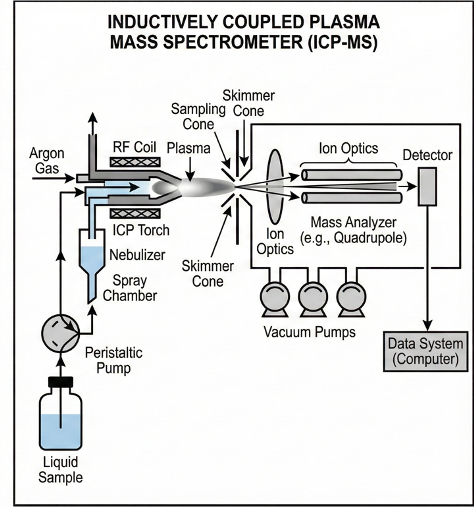Mass spectrometers can be combined with other instruments to form powerful analytical tools. One such example is the Gas Chromatography-Mass Spectrometer (GC-MS), which combines a gas chromatograph with a mass spectrometer (see diagram below).

The concept of gas chromatography is similar to that of paper chromatography except that both the sample and the mobile phase are gases rather than liquids. In GC-MS analysis, the sample first passes through the gas chromatograph, where different types of molecules are retained by the stationary phase for varying durations before flowing into the mass spectrometer. There, the molecules are fragmented and analysed.
The resulting data are presented on a three dimensional graph with retention time, mass-to-charge ratio and relative abundance as the axes. Consequently, a GC-MS spectrum contains more information about the sample than a TIMS spectrum. GC-MS is commonly used by border security forces to detect narcotics and explosives in luggage or on individuals, as well as by environmental agencies to monitor airborne pollutants.
Another important instrument is the Inductively Coupled Plasma Mass Spectrometer (ICP-MS), which is capable of detecting trace amounts of metals and non-metals (see diagram below). The main difference between an ICP-MS and a TIMS is the use of an inductively coupled plasma (a concentration of argon ions and electrons that is produced by inductively heating argon with an electromagnetic coil) to ionise the sample. ICP-MS has greater speed, precision, and sensitivity over TIMS and is used in the fields of medicine, toxicology, forensics, radiometric dating, pharmacy, etc.
